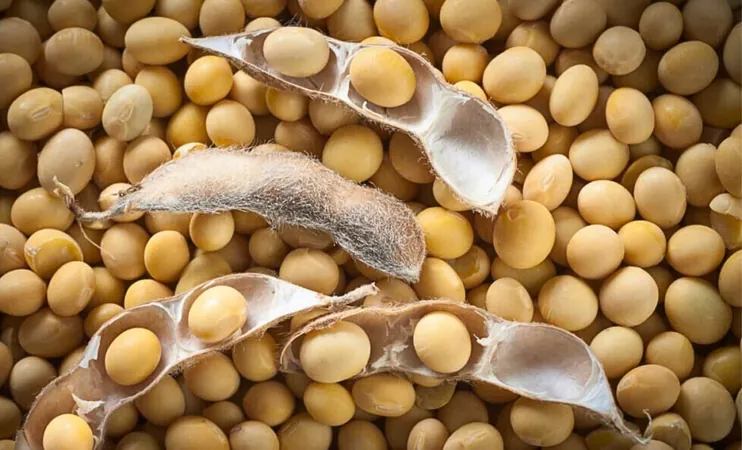
Should Soybeans Be Banned from American Cafeterias? France’s Warning Raises Alarms!
2025-04-17
Author: Ling
France's Food Safety Agency Issues Major Soybean Warning
In a bold move that could shake up menus in public institutions nationwide, France's Agence nationale de sécurité sanitaire de l’alimentation, de l’environnement et du travail (Anses) has raised serious concerns over the dangers of excessive soy consumption. This warning particularly targets mass catering services including school cafeterias, hospitals, and nursing homes.
The Soy Controversy: Friend or Foe?
Soy products like soy milk, tofu, and miso have surged in popularity in Western diets, especially among vegetarians and vegans due to their high plant-based protein content. Traditionally a cornerstone of Asian cuisine, soy is now a staple in many diets. But is it too much of a good thing?
Anses points out that soy contains phytoestrogens, specifically isoflavones, which mimic estrogen in the body. High levels of these compounds can potentially disrupt hormonal balance, leading to negative effects on the reproductive system.
A Surprising Recommendation for Public Facilities
Given these concerns, Anses is calling for a complete ban on soy products in all public catering facilities, irrespective of the demographics they serve. The recommendation aims to prevent overconsumption of isoflavones and protect various age groups from potential hormonal disruptions.
Who Would Be Impacted?
This unprecedented guidance would affect a spectrum of institutions, including daycare centers, schools, hospitals, and even prisons. Experts state that while soy may contribute to longer menstrual cycles in women and lower testosterone levels in men, the greatest worry lies in its effects on children, particularly regarding hormonal disruption during critical development stages.
Current Soy Use in Institutions: Not as Widespread as You Think
Interestingly, despite the alarm, soy doesn’t play a significant role in collective catering at present. A recent report indicated that many daycares have already limited or excluded soy from their menus, and schools only serve it as part of a vegetarian option—a mere fraction of the total meals.
Finding Balance: Alternatives to Soy
Anses emphasizes that it’s feasible to limit isoflavone exposure without sacrificing plant proteins. Simple strategies include diversifying protein sources by opting for legumes like lentils or beans instead of soy.
Furthermore, not all soy products pose the same risk. Isoflavone levels vary dramatically; for instance, soy snacks may contain up to 100 times more isoflavones compared to soy sauce, which is typically used in smaller quantities.
Conclusion: A Call to Action
With Anses’ alarming recommendation now on the table, consumers and institutions are urged to reevaluate their soybean consumption. By choosing more carefully and embracing diverse plant-based foods, a healthier balance can be achieved. Will we see a soy-free revolution in your local cafeteria? Only time will tell!




 Brasil (PT)
Brasil (PT)
 Canada (EN)
Canada (EN)
 Chile (ES)
Chile (ES)
 Česko (CS)
Česko (CS)
 대한민국 (KO)
대한민국 (KO)
 España (ES)
España (ES)
 France (FR)
France (FR)
 Hong Kong (EN)
Hong Kong (EN)
 Italia (IT)
Italia (IT)
 日本 (JA)
日本 (JA)
 Magyarország (HU)
Magyarország (HU)
 Norge (NO)
Norge (NO)
 Polska (PL)
Polska (PL)
 Schweiz (DE)
Schweiz (DE)
 Singapore (EN)
Singapore (EN)
 Sverige (SV)
Sverige (SV)
 Suomi (FI)
Suomi (FI)
 Türkiye (TR)
Türkiye (TR)
 الإمارات العربية المتحدة (AR)
الإمارات العربية المتحدة (AR)